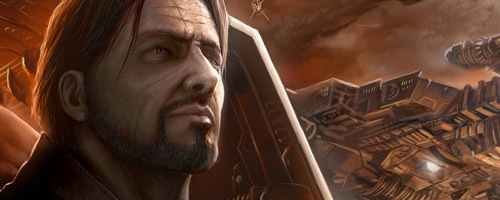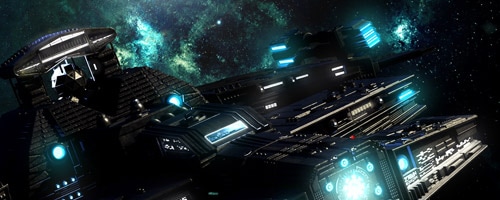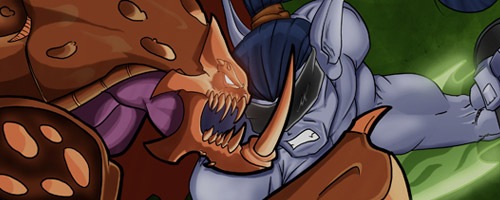Starcraft 2 news » StarCraft II Creative Development Q&A - Part 4
In part four of our continuing series, Brian Kindregan, co-lead writer of StarCraft II: Wings of Liberty and lead writer of Heart of the Swarm, answers more of the community’s most burning lore questions.
Question: Raynor's attitude in StarCraft II was surprising, considering where we left off in Brood War. After Kerrigan backstabbed him and killed Fenix, Raynor gave up on her and was hell-bent on getting rid of her. He explicitly promised he would kill her. What led him to change his mind, killing Tychus so he could save her?
Answer: I answered most of this question previously, but I want to follow up with this one for two reasons, which I'll take in reverse order.
About Tychus: By the time Jim and Tychus are in the cave with Kerrigan, I think Jim is all-in. He's made his choice. There's no going back, and no shrinking from what has to be done.
The bigger reason I wanted to address this issue was your good point that Jim's attitudes and actions at the beginning of Wings are surprising. I want to have a discussion with the community about this, and hear your thoughts. At the start of Wings of Liberty, it had been four years since Brood War, and Jim had been through a lot. He'd had time to reflect on the past — perhaps too much time. Additionally, the Queen of Blades was in seclusion for most of that time, so she was not continually stoking his hatred. If Jim felt the same exact emotions at that point, if his thoughts had not evolved at all, that would be very strange. It would be as if the intervening four years hadn't happened, and he was just a two dimensional automaton sitting in purgatory, waiting for the story to resume. So Jim slipped into an alcoholic haze, and focused on the things he'd lost — including the red-headed ghost, Sarah Kerrigan.
That's the reasoning for Jim's surprising actions. Now, the counterargument would be, players didn't go through those four years with Jim. They didn't experience that — so they experienced a disconnect. Jim went from one attitude straight into another. This is a completely valid argument.
So I'd ask the community — what do you think? Should Jim have been in the same spot emotionally that he'd been in four years earlier? Or was the evolution a good idea, but poorly executed? Or was it a good idea and it worked fine for most of us? Or should it have been a whole different idea?
Question: How did the Dominion fleet manage to break Char when Artanis, the Dominion, and the UED couldn't do that during the Brood War? How could the Dominion build a ridiculously over-bloated fleet to take Char after that devastating loss years before?
Answer: There are a number of factors. The fleets of the UED, Mengsk, and Artanis had already suffered attrition during the Brood War. The Dominion and the UED had also recently clashed on Korhal, further depleting both of their forces. Stukov and Duke had been lost to their respective armies as well.
Four years later, the Dominion had time to build several large fleets with much more advanced technology, and the Terrans had learned a great deal about how to fight Zerg. Even more importantly, when the Dominion fleet attacked, most of the Swarm was away from Char; the Queen of Blades had sent Zerg off to find the pieces of the artifact. She recalled them when the Dominion fleet appeared, but only the nearest broods would have been able to get back in time for the battle. The rest were en route when the fighting started. It was a calculated risk for the Queen of Blades, but she judged the artifact to be more dangerous to her than the threat of invasion. And I'd say she was right—after all, the invasion actually failed. It was only Raynor's use of the artifact that won the day.
Question: What specific lore problems does Blizzard think Wings of Liberty introduced?
Answer: I often agree with criticisms leveled at us, in the sense that we didn’t do the best job in communicating what we were trying to say. However, we haven't introduced anything that damaged the lore; we just haven’t always executed as well as we could have.
A practical example: the Overmind. We revealed some of its backstory, but we made mistakes in our presentation. We were giving an incomplete picture of the backstory. These were events that happened long ago, and we're only hearing the view from one of the entities involved. Other characters would have different views of what happened. And this is only the first chapter of a longer story. And not even the chapter focusing on the zerg. So we thought the Overmind revelations would raise questions rather than answer them. We were very wrong — we did not make it clear that this was an incomplete picture, and so many saw it as a definitive statement of what had happened, and were understandably upset.
We also thought that we could have Tassadar compliment the Overmind's courage without seeming to imply that they were BFFs. In other words, one can admire an enemy's courage, but still hate him. But that was a mistake — given how few words Tassadar gets to utter in the entire game, he should not have wasted any of them on a compliment to an enemy. It sent the wrong message.
Finally, we did not foresee, at all, that people would compare StarCraft to Warcraft III, and then make assumptions about what we were saying based on that comparison. "Brown orcs, green orcs. The Overmind is good!" We never said the Overmind was "good” anywhere in the game, but we should have been clearer about what we were saying. (E.g., spelled out that the zerg are not "good," nor were they ever "good" in the past.) Since we did not define what we were saying, the community, correctly, turned to other examples from Blizzard's body of work.
We will always struggle with the fact that we get only a few lines of dialogue in this fast-paced, dynamic game to explain concepts that could fill 50 pages in a novel (such as the Overmind's backstory, or the earlier discussion of free will). We'll never be able to explain things in as much detail as I'd like, and will instead have to rely on the player to consider what we've shown and to interpret it. Narrative games are not films, and they are not novels. However, in this case, we could have done a better job explaining our story point and anticipating all the ways it could be misinterpreted.
This is something we work on continually.
If you’re looking for more lore, here’s part 1 of our StarCraft II Creative Development Q&A, here’s part 2, and here’s part 3. We’ll have many more answers to your burning questions in the weeks to come.


















 Update comments
Update comments